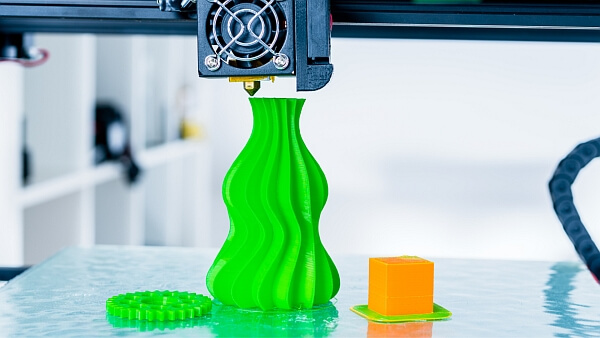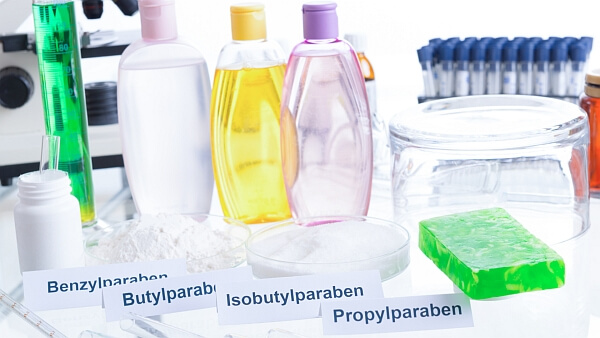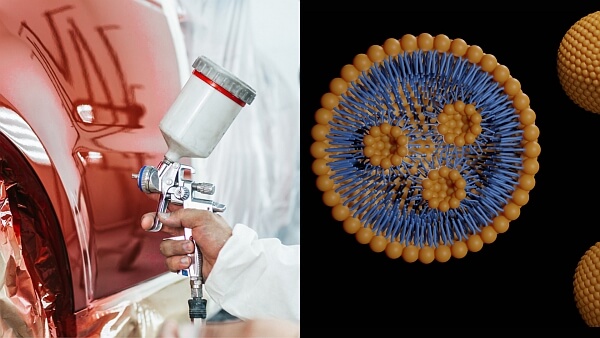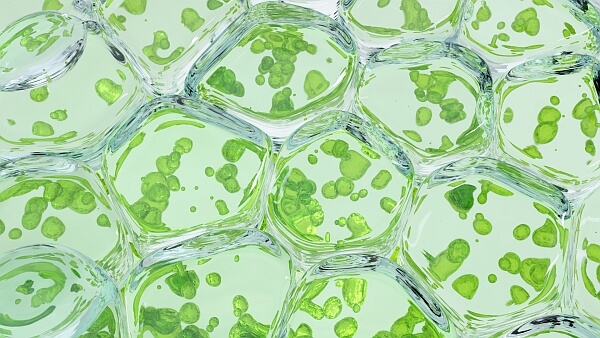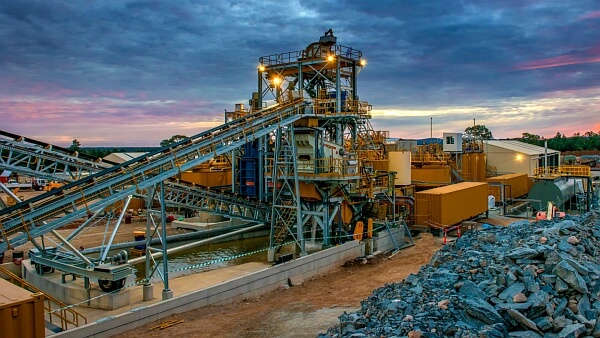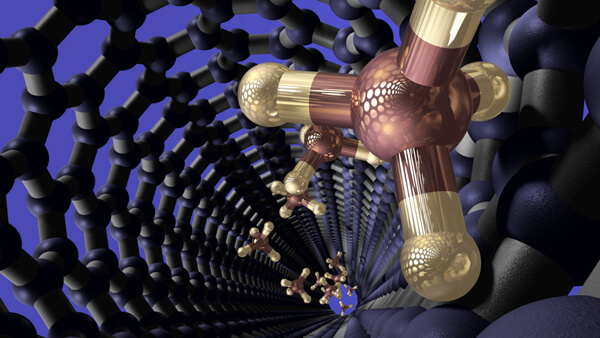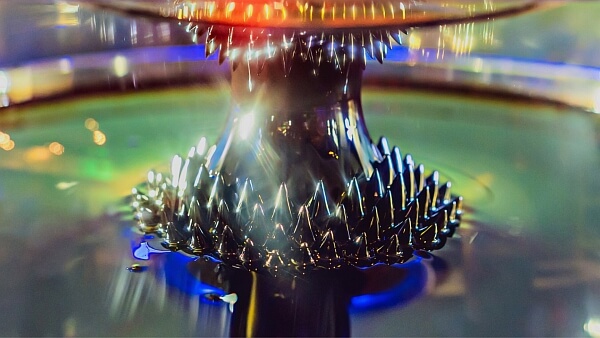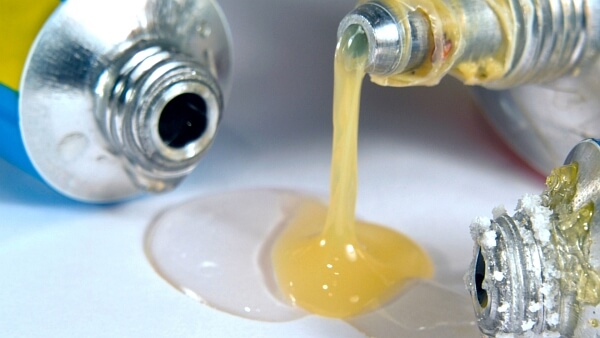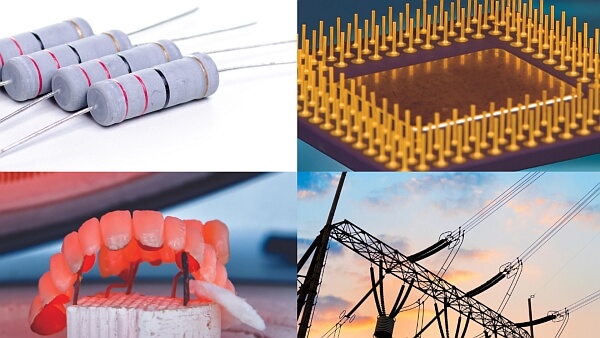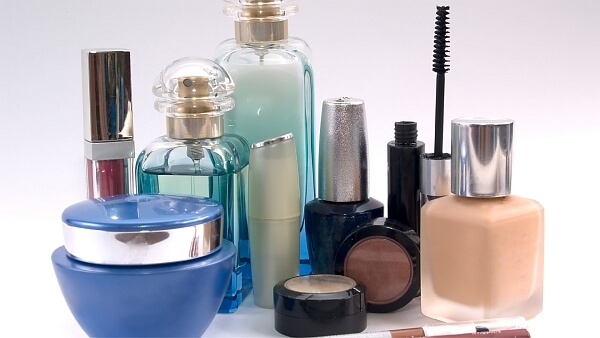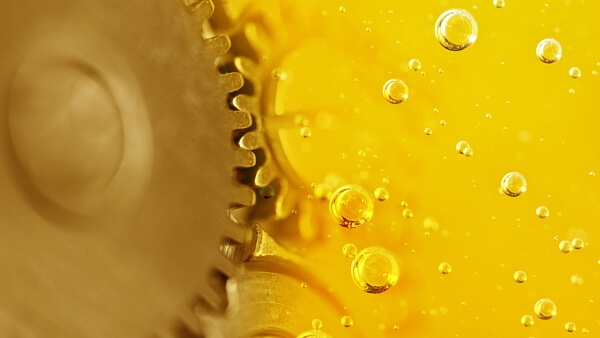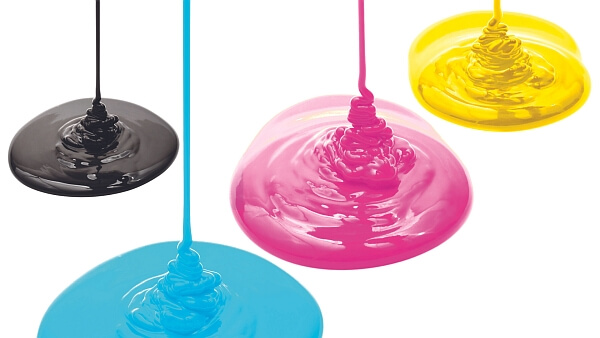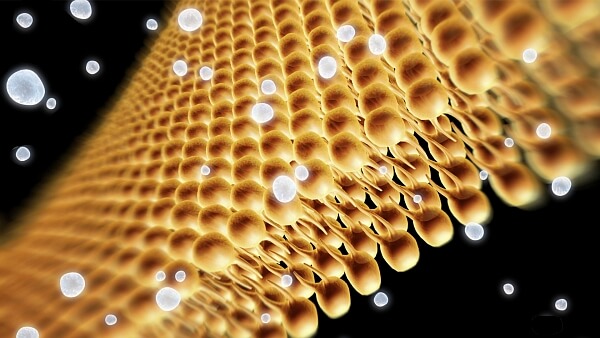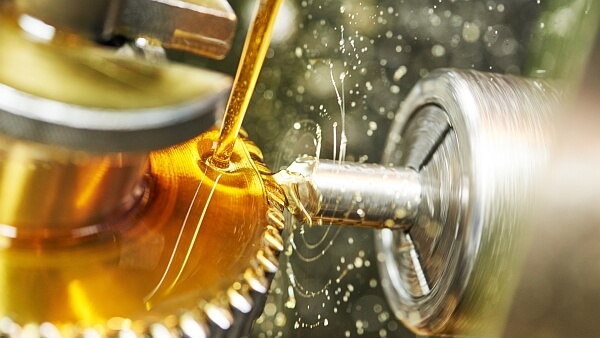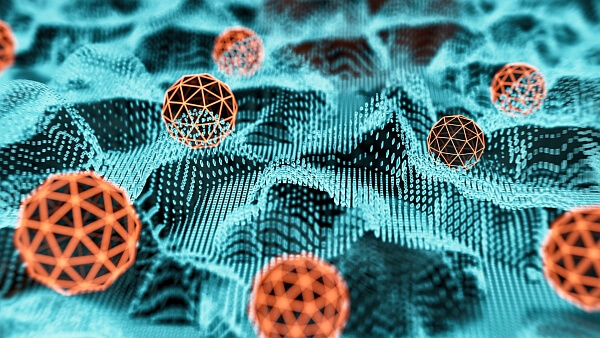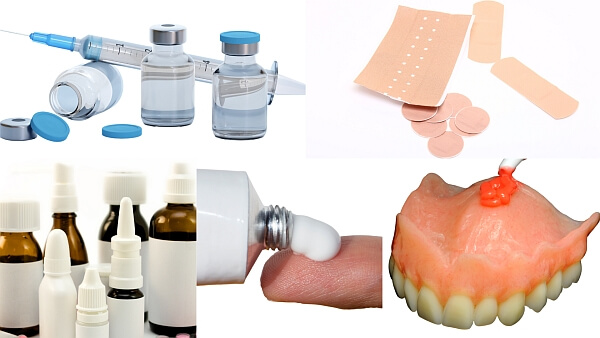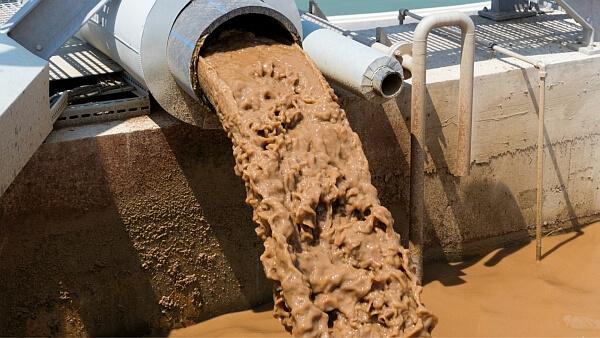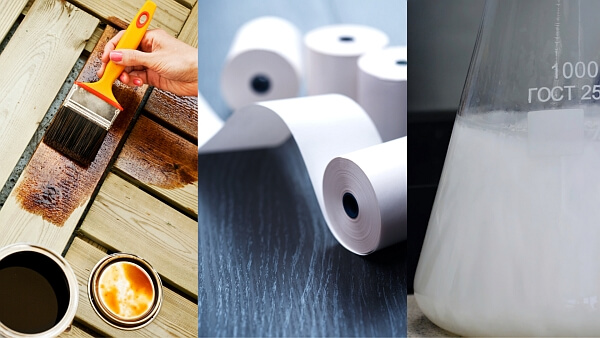Our products sorted by sectors
Methods we offer
to your industry
You may find further sectors and applications in our Literature database.
Additive Manufacturing & 3D Printing
We support you from the particles via the inks to the printed product with different particle, dispersion and adhesion analysers.
Determine the particle size distribution and other properties, e.g., to avoid the clogging of printer’s nozzles. Characterize particle dispersibility based on Hansen parameters to design the ideal printing ink.
Conductive and non-conductive inks are subject to real-time and accelerated stability testing.
With LUMiFrac you get a rapid testing method for fatigue in metal additive manufacturing, may improve the adhesive bonding of 3D-printed plastic components, can perform adhesion measurements on printed electronics. Last but not least, even the microcontact printing of patchy silica particles is enabled.
Additives and Primers
Additives
Additives are used for a wide variety of products in a wide variety of industries. Examples include binders, emulsifiers, flame retardants, corrosion inhibitors, lubricants, blowing agents and thickeners.
Their individual particle and droplet properties can be characterized with the appropriate LUM measuring devices.
After the addition of additives to products, the products are then examined in the original concentration in order to understand the desired effects of the additives and the underlying particle and other interactions and to use them for product improvement and further development or even reformulation. Rapid screening of additives, optimization of additive concentrations and rapid reformulation based on environmental and other standards are selected examples.
Undiluted products are always examined in a very wide concentration and viscosity range with the appropriate LUM measuring device. From low-concentration, aqueous systems to bitumen, pigment and building material pastes. The range of investigations extends from real-time characterization under application conditions to accelerated dispersion analysis based on the acceleration concepts of temperature, tilting (boycott effect) and higher gravity.
Primers
For the development of new primers outstanding adhesion results to various substrates shall be obtained. One material may show different end results even when using the same primer. It depends on the previous processing of the material and, for example, whether it is a syndiotactic or atactic polymer. To evaluate the suitable primer for plastics, it is usually applied on the plastic and is then coated by a varnish or another finish. These specimen generally undergoes the cross-cut-test.
The adhesion then is verified with an adhesive tape. This fast test only provides information on sufficient or insufficient adhesion. A detailed distinction as to the particular adhesion strength is not available. Here, the Adhesion Analyser LUMiFrac come into operation. This multisample measuring instrument, featuring easy operation and measurement, provides the user with the adhesion strength in Newton, for 8 samples simultaneously.
Adhesives
Bonding is a strong growing joining technology which offers many posibilities and advantages, compared to other joining technologies. The transmission of force is enabled over the entire joint surface, different kind of materials can be joint, a combination with conventional techniques (e.g. resistance spot welding) is enabled. Lightweight construction is enabled. Whether being technically invented or bio-inspired or biomimetic, adhesives serve this hugh range of applications.
With LUM instruments polymers and other raw materials for adhesives are characterized regarding particle properties, like particle size distribution, and dispersibility. Formulations in original concentration are understood regarding their physical separation stability, the influence of additives, the sedimentation behaviour. Real-time and accelerated testing concepts apply.
The adhesion and surface property of polymer blends, the bonding strength of the mussel adhesive protein-dispersed TiO2 nanoparticle-coated film on substrates, as well as the adhesive and bonding strengths of adhesives in combination with a large variety of glass, metals, nonmetals, polymers and wood are measured by LUMiFrac.
Agrochemicals, Crop care, plant protection
Different LUM instruments characterize particle and dispersion properties of Emulsifiable Concentrate (EC), Emulsion in Water (EW), Oil Dispersion (OD), Suspension Concentrate (SC), Suspo Emulsion (SE), Soluble Liquids (SL), Water Dispersible Granule (WG).
The encapsulation of active material becomes more important in plant protection with the need for suitable analytical instruments to characterize the formulations.
Accelerated sedimentation for the prediction of long-term storage stability has become an established method. Characterizing and predicting long term stability of OD pesticide formulations by Near Infrared Centrifugation has been published by ASTM.
Recent developments provide customers with STEP-Technology® and two complementary physical approaches. This results in the ideal combination for the analysis of agrochemical, crop care and plant protection products.
Asphaltenes and Crude oil
Asphaltenes
Asphaltenes are molecular substances that are found in crude oil. They are complex mixtures containing hundreds or even thousands of individual chemical species. They cause many problems in crude oil production, transport and distillation.
LUM customers apply ASTM D7827 - 12 Standard Test Method for Measuring n-Heptane Induced Phase Separation of Asphaltene from Heavy Fuel Oils as Separability Number by an Optical Device (LUMiReader PSA). With further LUM instruments you may investigate asphaltene stability and asphaltene inhibitor efficacy, have direct access to inhibitor and solvent effects on the deposition mechanism of asphaltenes.
Crude oil
Crude oil is seldom produced alone because it generally is commingled with water. But water creates several problems and usually increases the unit cost of oil production. The produced water must be separated from the oil , treated, and disposed of properly. Furthermore, sellable crude oil must comply with certain product specifications, including amount of basic sediment and water (BS&W) and salt . Produced water must be separated from the oil to meet crude specifications. Produced oilfield emulsions can be classified into three broad groups: Water/Oil, Oil/Water, Multiple or Complex emulsions. In the oil industry, W/O emulsions are more common. [cited from
https://petrowiki.org/PEH:Crude_Oil_Emulsions#Types_of_Emulsions]
Demulsification is the breaking of a crude oil emulsion into oil and water phases. From a process point of view, the oil producer is interested in three aspects of demulsification:
- Rate or the speed at which this separation takes place.
- Amount of water left in the crude oil after separation.
- Quality of separated water for disposal.
Cited from https://petrowiki.org/Oil_demulsification
Enhanced oil recovery (abbreviated EOR), also called tertiary recovery, is the extraction of crude oil from an oil field that cannot be extracted otherwise. One EOR process is steam flooding & water injection. LUM analytical instruments apply for, e.g.,
- Quantification of the separated small crude oil phase on top of the seawater phase.
- The droplet size distribution
- Evaluation of surfactant performance
- Sedimentation and flocculation behaviour of nanoparticle modified polymers for EOR
- Centrifugal recovery of solvent-diluted bitumen from oil sands.
The entire world of emulsion characterization, as provided by LUM instruments, is applied to crude oil for Emulsion stability, Demulsification, Droplet & Particle Characterization, Additive selection & dosage.
Batteries, Energy storage materials, Fuel cells, Wind turbines
Although active materials for batteries and fuel cells span the entire periodic table, the need for carbon (soot, graphene, carbon nanotubes, etc.) is undisputed. The inherent chemical and physical properties of the raw materials, the interaction between the particle surface and the continuous phase and the dispersing process itself play a role in its dispersibility. All three factors must be considered.
Thanks to STEP technology and the multi-sample concept, the LUM analyzers enable the efficient determination of particle size distributions and particle surface properties according to the Hansen parameter concept.
Manufactured battery pastes are characterized undiluted with regard to their separation stability.
The adhesion analyser LUMiFrac is used to determine the adhesion of coatings on copper foils for anodes and aluminum foil coatings for cathodes in lithium-ion batteries.
Time savings of up to 80% can be achieved without clamping and with up to 8 samples in parallel.
Building materials
Whether a house is build, an artificial bone or bone-implants , particle properties of the building materials, their dispersibility and swelling behaviour, the separation behaviour of the resulting dispersions, and last but not least the final mechanical properties need to be analysed. Understand the dispersibility of CNT nanofillers in aqueous suspension and their influence on the early age properties of cementitious matrices, the stabiliser influence on the cement separation and post irradiation shelf-stable dual paste direct injectable bone cement precursor systems. Perform a non-destructive mechanical testing of allograft bone-implants by analytic centrifugation.
Adhesion testing with substrates made of concrete, glass, metal, plastics, wood is realized with the LUM Adhesion Analyser.
Coatings & Surfaces
Coated particles and particle surfaces
The inherent chemical and physical properties of the raw materials, the interaction between the particle surface and the continuous phase and the dispersing process itself play a role in particle dispersibility. All three factors must be considered.
Thanks to STEP technology and the multi-sample concept, the LUM analyzers enable the efficient determination of particle size distributions and particle surface properties according to the Hansen parameter concept.
Looking for single particles and for particle concentration, SPLS-technology can be applied additionally.
After understanding the dispersibility of particles, the separation stability of the formulated suspensions and emulsions plays an important role. Again STEP-technology based instruments are used.
Solid components and their surfaces
Cured coatings on different substrates as well as surface treatment of different material surfaces are characterized in accordance with ISO, DIN EN, JIS and ASTM norms and standards with the LUM adhesion analyser.
In the energy sector for example, the coatings characterization on wind turbines as the investigation of the ice adhesion are of importance.
Save time and money by avoiding sample clamping and running up to 8 samples in parallel.
Biomolecules, Biosubstances, Biotechnology
The application range for LUM instruments to characterize biomolecules and biosubstances and to be used in biotechnological processes is increasing as the field of biotechnology itself is.
LUM instruments determine particle properties, like density and size distribution, particle count and concentration, magnetophoretic velocity of pure particles as well as of encapsulated particles.
Bioavailability and biocompatibility are keywords in this context.
Separation and aggregation are analysed in real-time as well as applying several concepts of acceleration, based on temperature, inclination and higher gravity. Cell deformation, dewaterability and more can be analysed in LUM analytical centrifuges.
Biomimetic polymers and biopolymers, blood and blood components, cells, DNA-tagged silica, emulsions based on algae, fermented products, hydrocolloids from lignite, lipid nanocarriers, magnetic particles, microalgae are few representatives of the substances LUM customers investigate all around the world.
LUM instruments support the processes and systems in the production of fermentation products. They are used to understand and control downstream processes as well as upscale processes from the lab to process centrifuges, like disc-stack centrifuges.
Mining, Soil Science & Volcanology
Several LUM instruments support you in solving your challenges based on particle characterization, separation stability, characterization of colloidal stability and flocculation.
This includes e.g.,
- determination of the particle size distribution of limestones and filter sand and others, which are potential adsorbents for acid mine drainage treatment and wastewater purification,
- characterization of the colloidal behavior of kaolinite particles, their flocculation behaviour, their maximum packing and settling rates by using a single instrument,
- quantification of the wastewater dewaterability for understanding sludge dewatering and fouling.
But also
- the frictional properties of basalt experimental faults and implications for volcano-tectonic settings and geo-energy sites,
- experimental investigation of the aggregation-disaggregation of colliding volcanic ash particles in turbulent, low-humidity suspension,
- experimental simulations of volcanic ash resuspension by wind under the effects of atmospheric humidity.
And last but not least a method for the selection of surfactants in well stimulation. Just ask us.
Carbon Nanotubes, Carbon Onions & Graphene
Carbon nanotubes or CNTs are carbon-based tubes whose size distribution is in the nm range. They are important as additives for lithium batteries, in nanofluids for solar energy systems. As an additive in fibre-reinforced plastics, for example for rotor blades in wind turbines, they play a decisive role in the extraordinary stability and resilience, with a relatively low weight. They are also of great importance for solid lubricants and self-lubricating surfaces. Nanocomposites containing CNT are used in hydrophobic and electrically conductive textile coatings as well as in membranes for the filtration of process wastewater. In order to optimize the energy density within lithium batteries, e.g., for electric cars, carbon onions with a multi-layer microstructure were developed. Graphene has also become indispensable in the world of electronics and photonics in the area of composite materials.
The time-dependent determination of the sedimentation velocity of graphene nanoplatelets in aqueous surfactant solutions allows for new processes of liquid phase direct chemical exfoliation.
LUM technologies allow you to determine the particle size distributions, the dispersibility in different media, also using the Hansen parameters, the quantification of the colloidal and separation stability. In the field of material testing, in particular for determining the adhesive strength of CNT-containing coatings and CNT composites, the LUMiFrac supports you reliably in a very flexible measuring range.
Characterization of magnetic particles & fluids / Magnetic separation
Magnetic micro- and nanoparticles have increasingly wide applications in information technology, magnetic fluids, selective separation, and nanomedicine. Their susceptibility (responsiveness) and magnetization has to be analyzed during particle design, optimization of application and quality control of the production process. Determination of magnetophoretic velocity by optical STEP-Technology® as a tool to characterize assembled objects and determination of magnetic responsiveness can be applied to very different magnetic objects. Besides magnetophoretic velocity distributions under gravity, analytical centrifugation can be employed to quantify the magnetization and magnetic forces between magnetic particles using magnetic fields directed orthogonally to the centrifugal field.
The recycling of waste materials is essential for society’s transition to a circular economy, and a novel recycling technology based on magnetic density separation is being developed by LUM instrument users. Nonmagnetic solid materials dispersed in a ferrofluid will levitate in external magnetic field, reaching specific floatation heights that depend mainly on the buoyant mass densities of the materials and the precise height dependence of the magnetic field strength. However, ferrofluids consist of colloidal dispersions of magnetic nanoparticles in a solvent, and in external magnetic field, there is the risk of rapid degradation of the ferrofluid. In LUM customers‘ research, they characterize the field-dependent colloidal stability of ferrofluids using X-ray-STEP-technology.
Ceramics
High value ceramic materials occur in additive manufacturing, like DLP-printing, in separators for Lithium secondary batteries, in ultrafiltration membranes and ceramic water purification filters, in ceramic inks, in dental adhesives and in wear resistant coatings. Nanosized ceramic powders and nanoparticle suspensions have further applications. All can be characterized in terms of particle size distribution, particle density and particle dispersibility by various LUM instruments. Ceramic suspension separation stability is characterized either in real-time (LUMiReader PSA, LUMiReader X-Ray) or accelerated by analytical centrifugation in LUMiFuge and LUMiSizer.
With the miniaturization of commercial electronic products and devices, the size of electronic components has become smaller than ever. BaTiO3 is widely used in electronic components, such as multilayer ceramic capacitors (MLCCs). Bio-inspired adhesive materials are applied in this context. The adhesive strengths of the used poly-copolymers by butt tensile tests is a typical appication for the centrifugal adhesion test analyzer LUMiFrac.
Cosmetics, Home and Personal Care
From dispersibility via stability to the secrets of sediments
As diverse as the cosmetic and HPC formulations and products are, LUM instruments are just as diverse, allowing you to maintain your top sellers, improve existing ones and formulate new products.
The characterization of particle properties such as size distribution and particle density plays an important role for raw materials. Understanding the Hansen solubility/dispersibility parameters of particles is becoming increasingly popular for better formulation.
The STEP-Technology® realized with two complementary physical approaches results in the ideal combination for the analysis in the product formulation and testing of cosmetics, household and personal care products based on emulsions and suspensions.
Due to market demands, cosmetics and HPC products like make-up, cremes, shampoos or liquid fabric softeners are typically formulated to be stable and very stable against separation, so here the methods for accelerating the evaluation of long-term stability apply. Accelerated stability testing with LUM instruments applies either physical acceleration by higher gravity and/or elevated constant and cycling temperature testing.
LUM instruments work according to the relevant ISO standards and guidelines for determining particle size distribution and testing dispersion stability.
Bonding strength for coatings and composites
Determine the adhesion of nail polish to substrates (e.g., fingernails, toenails), plasters and medical tape to artificial skin, or the composite strength of valuable cosmetic packaging materials with the same LUM centrifugal tensile testing machine. Appropriate standards apply.
Lubricants, Coolants, Release Agents
Besides in industrial applications, lubricants, coolants and release agents are used for many other purposes. This includes cooking (oils and fats in use in frying pans, in baking to prevent food sticking), bioapplications on humans (e.g. lubricants for artificial joints), ultrasound examination, medical examination.
Lubricants often contain 90% mineral oils as base oils and less than 10% additives. Sometimes base oils consist of vegetable oils or synthetic liquids such as hydrogenated polyolefins, esters, silicones, fluorocarbons.
Non-liquid lubricants include powders (dry graphite, PTFE, molybdenum disulphide, tungsten disulphide, etc.).
Dry lubricants such as graphite, molybdenum disulphide and tungsten disulphide also offer lubrication at temperatures higher than liquid and oil-based lubricants are able to operate.
Different LUM instruments for particle and dispersion characterization serve the needs in the lubricants, coolants, release agents market. Applications include particle counting and particle and droplet size distribution, rapid separation and instability testing, prediction of the long-term behaviour in short time.
Examples for rolling oils prove LUM’s accelerated testing approach. Waiting for 1 month @ 60°C without acceleration is reduced down to a 6 h measurement, several hours of waiting at elevated temperatures are cut short to 17 min at the same temperature, both when applying higher gravity.
A large range of measuring parameters, e.g., temperature, acceleration, wavelength, in combination with a large variety of accessories serve the very different needs of all lubricants, coolants and release agents customers.
Inks, Lacquers, Paints
Inks, lacquers and paints, varnishes can be challenging formulations because often they are required to have particularly long storage stability. High particle concentrations can be challenging for optical technologies - not so for LUM instruments. Stability testing in real-time and under accelerated conditions is always performed for the product in its original concentration. Measuring parameters and a large variety of accessories in combination with the combined optical and X-ray STEP technology allow the user for the necessary high flexibility to measure samples of lower (like aqueous based inks) and higher viscosity (like pigment pastes) undiluted. From optical point of view, from transparent up to completely turbid samples are measured.
For details on the particle size distribution and further pigment particle characterization kindly see pigments. For coated pigment particles and coatings on surfaces, like cured paints on surfaces, kindly see Coatings & Surfaces. The additional CAT-technology is used for the determination of coatings strengths, saving time and money.
Filtration and membrane testing
Dispersions are filtered in many branches of industry. The systems required for this are usually designed on the basis of complex and time-consuming tests on a laboratory and/or pilot plant scale, taking safety factors into account. Classic nutsche filters in the form of pressure or vacuum filtration are often used for the experiments. In the course of the development of biotechnology and nanotechnology, new challenges arise, since in these areas only small and usually very expensive sample quantities are available.
An alternative method for effective and rapid quantification is analytical photocentrifugal filtration (ACF) based on STEP-technology in LUMiSizer. It enables the filtration behavior of dispersions and filter media to be determined. The automatic detection of the meniscus position of the filtrate determines the filtration behavior over time.
Single Particle Optical Counting based on SPLS-technology in LUMiSpoc, complements above ACF to detect the particle concentration and the particle size distribution in the filtrate.
Beverages and Food
In the hugh sector of food and beverages LUM instruments are applied in scientific research and in industries for the determination of particle and droplet properties, like size distribution, density of droplet and solid particles dispersed in a liquid continuous phase, particle surface properties (based on Hansen parameters), swelling behaviour. Free and encapsulated particles are characterized, from colorants, flavours, hydrocolloids, oils, proteins, stabilizers to thickeners.
When creating a new product, improving an existing one, assuring the quality of products, not only raw materials are of interest, but also dispersibility and separation stability need to be understood. Destabilization phenomena in liquid and semi-solid food shall be described qualitatively and quantitatively. Different LUM particle and dispersion analysers based on STEP technology (optical and X-ray depending on the composition) allow you for real-time and accelerated testing, applying acceleration concepts based on temperature, inclination and higher gravity. Stability and separation testing is always performed in original concentration. Shelf-life studies for liquid and semi-solid food are reported.
Transparent and turbid, low and high viscous samples are measured with appropriate accessories in the suitable instrument. Solid food like chocolate, instant roux, instant coffee are measured as any kind of beverages, dairy and alt dairy products, food gels, ketchup, mayonnaise, pesto, sauces, starches etc.
Recently introduced MRS-technology provides you with inline product and process parameter determination. E.g., determine fat, protein and dry matter in dairy products inline and control processes in the dairy processing plant.
LUM instruments support the processes and systems in the production of fermentation products. They are used to understand and control downstream processes as well as upscale processes from the lab to process centrifuges, like disc-stack centrifuges.
Metal working
Determine particle count and concentration as well as particle size distribution of pigments by SPLS technology. Exploit the advantages of optical and complementary X-ray STEP technology for the detemination of the particle size distribution at higher concentrations, of the particle density and particle surface properties, based on the Hansen Solubility / Dispersibility Parameters. Understand particle dispersibility as well as the separation stability of suspensions and emulsions with metals and nonmetals. Real-time and accelerated stability testing as well as prediction of shelf life is enabled. Several ISO guidelines and norms/standards are applied.
Examples include nanoparticle and microparticle size distributions, emulsifier selection for metal working fluids, stability testing of release agents, emulsion stability of rolling oils.
Centrifugal adhesion testing technology is applied for tensile and shear testing of coatings on various substrates and for composites. The advantages compared to a tensile testing machine include a much shorter measuring time for 8 samples in parallel, no sample clamping needed, and a large force range to be applied in a single Adhesion Analyser.
For coated particles and coatings on metal substrates kindly also see Coatings & Surfaces.
Nanomaterials
Modern technologies enable and require the use of nanomaterials in many areas such as medicine, pharmaceuticals, biotech, cosmetics, but also construction, microelectronics, and many more.
For the production, modification and application of nanoparticles of various shapes, such as spherical particles, nanotubes, nanofibers, knowledge of their number and concentration, their particle size distribution and density is required. If nanoparticles are dispersed, it is important to understand the dispersibility (e.g. using the Hansen parameters), the effective hydrodynamic particle density, the elasticity, and other interactions and to influence them in the sense of application. In the longer term, the separation stability, the colloidal stability and particle interactions play a role, e.g. in order to prevent aggregation and flocculation. Nanoparticles can also have magnetic properties, so that other influences such as external magnetic fields have to be investigated. LUM offers a variety of particle and dispersion analyzers for all of the above applications.
Coatings can contain (modified) nanoparticles, plasma coatings can be nanostructured. Adhesion promoters can contain nanoparticles. The quantification of adhesion strengths of different coatings on a variety of substrates is one application area of the multi-sample adhesion analyser from LUM.
Pharmaceutical products
LUM devices offer real-time and accelerated stability testing of pharmaceutical dispersions according to WHO-, EMEA-, ISO- and other guidelines.
Count single nano- & microparticles, determine their size distributions, also at higher concentrations, determine hydrodynamic particle densities.
Characterize the adhesion properties of (bio-)medical non-woven fabrics, medical tapes, coatings on biometals, dental & biomimetic adhesives.
From adjuvants via bones, capsules, contraceptives, cough syrup, eye drops, nasal sprays, topical formulations to vaccines, there is the suitable LUM instrument for your R&D, quality assurance and quality control.
Pigments
Pigments are to be found in nearly every industry and resultingly they are subject to many reseach areas, directly and indirectly. Paints, cosmetics, ceramics, paper, food, battery and energy storage materials, to name a few.
Determine particle count and concentration as well as particle size distribution of pigments by SPLS technology. Exploit the advantages of optical and complementary X-ray STEP technology for the detemination of the particle size distribution at higher concentrations, of the particle density and particle surface properties, based on the Hansen Solubility / Dispersibility Parameters. Understand particle dispersibility as well as the separation stability of suspensions and emulsions with pigments. Real-time and accelerated stability testing as well as prediction of shelf life is enabled. Several ISO guidelines and norms/standards are applied.
For coated pigment particles and coatings kindly see Coatings & Surfaces.
Sludges and Wastewater
Determine the particle size distribution of limestones and filter sand, which are potential adsorbents for acid mine drainage treatment and wastewater purification.
Measure the droplet size distribution in simulated oily wastewater, in the context of filtration experiments through corrosion resistant ultrafiltration membranes for wastewater treatment.
Study the efficiency of the coagoflocculation process in the context of the clarification of olive mill and winery wastewater by means of clay-polymer nanocomposites.
Nano-carbon-based mixed matrix cellulose acetate membranes have potential use in both gas and liquid separation processes. Characterize the dispersion stability of Cellulose Acetate/ Multiwalled Carbon Nanotubes.
Understand the colloidal behavior of kaolinite particles, their flocculation behaviour, their maximum packing and settling rates by using a single instrument.
Determine the wastewater instability index.
Quantify the wastewater dewaterability for understanding sludge dewatering and fouling.
Optimize the filter design and operation for wastewater treatment sludge.
Cellulose, Paper, Pulp, Wood
Cellulose nanocrystals, nanofibrils, nanoparticles and microparticle have plenty of applications in many industries. From high performance materials via papermaking & pharmaceutical to sludge dewatering to name few.
Characterize carbon nanotubes, cellulose, fillers, inks and polyelectrolytes in the papermaking process.
Determine the particle size distribution, understand the colloidal stability, the flocculation and separation behaviour. Apply analytical centrifugation for studying pulp dewatering and fibre interactions. Understand the influence of the pore structure of base paper on the coating result on LWC papers.
Wood preservatives, flame retardants, paraffine and wax emulsions, e.g., for medium density fibreboards - MDF, are accessed by optical and X-ray STEP-technology for particle and dispersion characterization.
The pull-off strength of coatings from wood, the (de-)bonding of highly filled wood fiber reinforced plastics for outdoor applications belong to LUMiFrac applications.
Individual advice is important to us
We will be happy to advise you on our equipment, processes and technologies.
LUM News
Jobs, Reports & Events
New product coming soon: LUM about to fulfill one of our customers' greatest wishes
It's happening this autumn: LUM is launching a new device!
Stay tuned for more details.
Read more … New product coming soon: LUM about to fulfill one of our customers' greatest wishes
